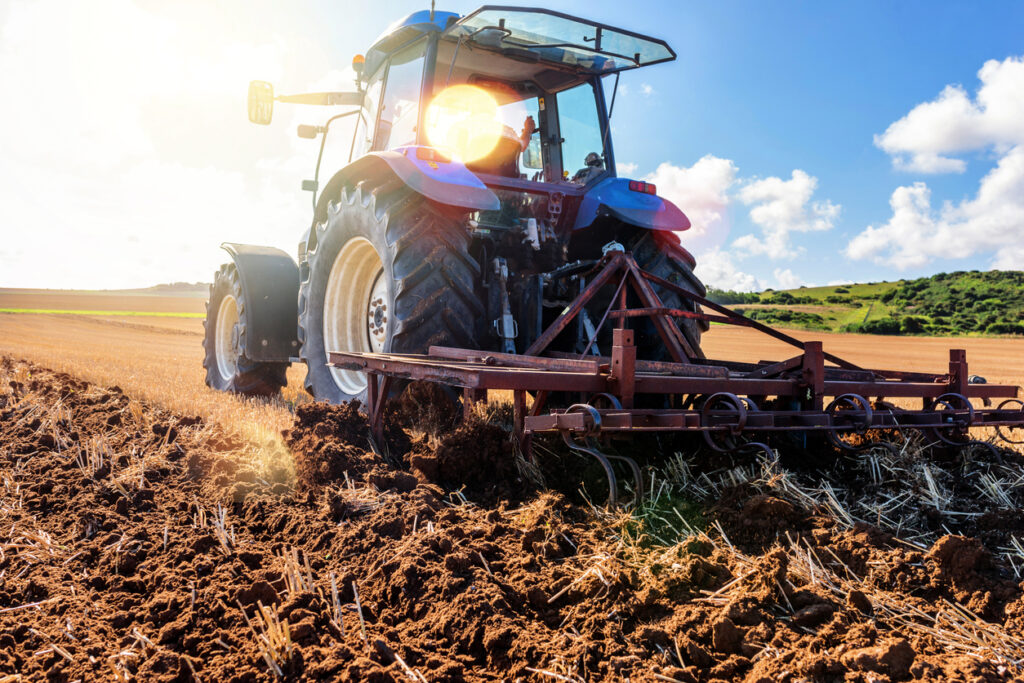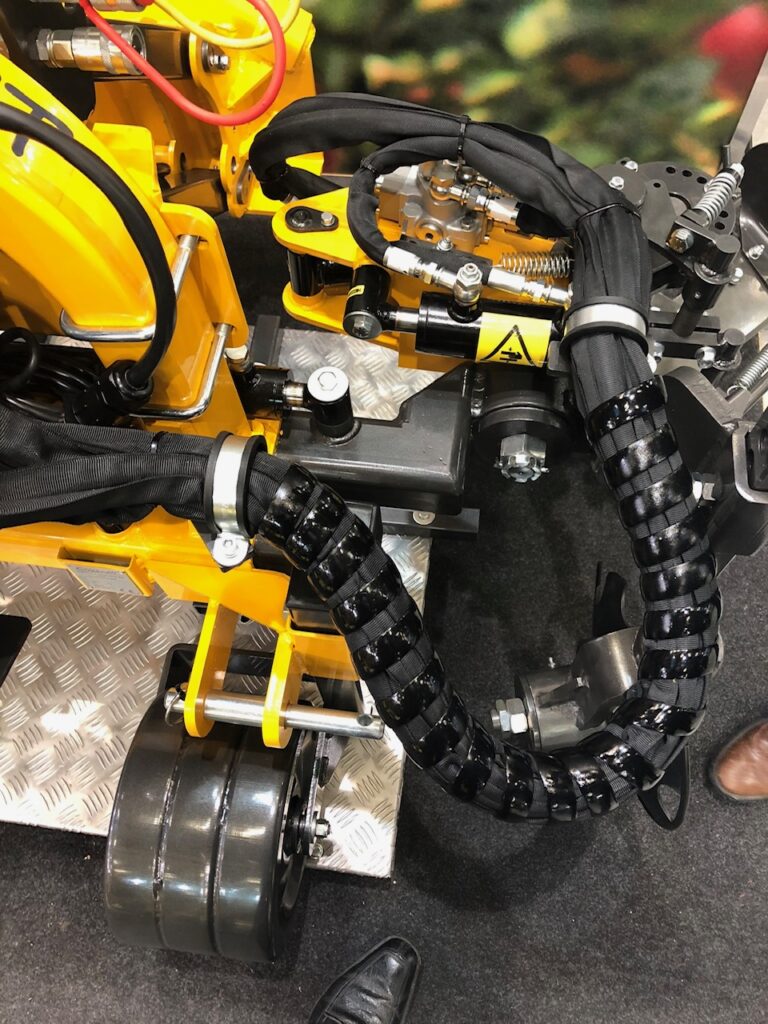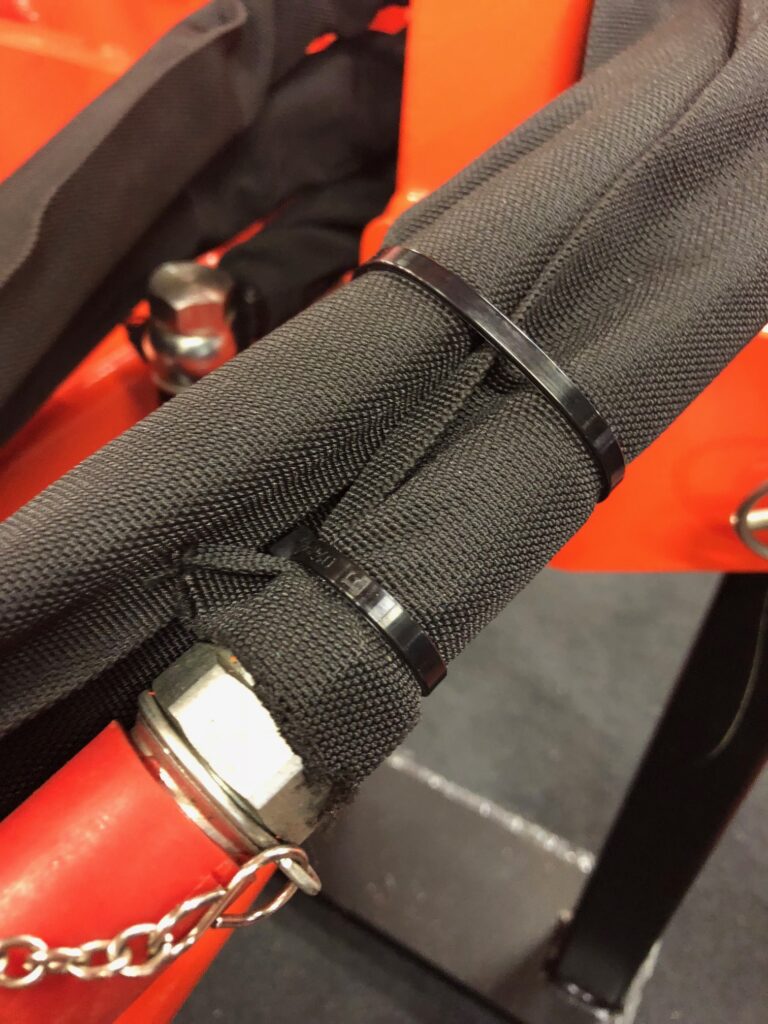Agriculture, as the most important sector of the world’s economy, is undergoing a remarkable transformation, thanks to the integration of technology into every aspect of the industry. The revolution known as Agri-Tech, relies on a myriad of innovations, and one of the often overlooked ones are the cables and wires that connect all the various machines and accessories that are used in the agricultural environment. Also, hoses and pipes need protection. Therefore, any conduit, whether electric or not, often needs to be secured against the harsh environment – the solution is a protective sleeve.
With protective cable sleeves from RND, you can ensure a safe connection in agricultural applications. Protective cable sleeves, such as Tubular and DuoTubular, are increasingly significant in enabling efficient and reliable operation of various components used in farming practices.
Tubular & DuoTubular cable sleeves
Tubular cable sleeves are protective coverings used to shield and manage cables and wires in various applications. These sleeves are designed to provide physical protection, abrasion resistance, and organisation for cables, wires, hoses, and other components. They are commonly used in industries such as automotive, electronics, aerospace, and agriculture, where a high level of protection is needed.
DuoTubular cable sleeves have the same characteristics but with two separated channels; it allows you to bundle multiple substrates without the need to use tie-wraps, which can be time-consuming to install. By separating the channels DuoTubular provides protection in harsh environments from mechanical damage caused by high vibration, abrasion and friction.
Examples of use in agriculture
Tubular and DuoTubular cable sleeves are a common solution in agricultural environments. They are especially suitable for connecting hoses and pipes as well as electrical harnesses between the main tractor vehicle and the various farm implements which get attached to the tractor. They provide protection for edge-cutters, telescopic arms, balers, seed-drills and any other accessory of that type.

Robotics and Agri-Tech
Protective sleeves are common in robotics, agricultural vehicles, moving arms and automation equipment as well as forestry equipment, as in terms of design, agriculture and forestry equipment are fairly similar.
In the realm of robotics and developing technology in the agricultural sector, these sleeves protect intricate cable systems controlling actuators, sensors, and communication lines from abrasion and physical damage. They shield cables from harsh agricultural environments, contributing to the accuracy of sensor networks used for soil and weather monitoring. Additionally, Tubular and DuoTubular sleeves support automation and data transmission in agriculture, ensuring reliable connectivity for IoT devices and farm management systems.
They also aid in cable organisation, ensuring unobstructed pathways for precise robotic movements. If you are curious about agri-tech, read our article showcasing 5 emerging agri-tech trends.
Benefits of cable sleeves
RND Tubular and DuoTubular cable sleeves advantages:
- Very flexible
- Temperature range -50°C to 150°C
- Provides a perfect and easy solution to protect all wiring, cables, hoses and insulation pipes
- Bundle multiple substrates without the use of tie wraps
- Protects from mechanical damage arising from exposure to tough conditions such as harsh environments, vibrations, frictions, etc.
- Resistant to extreme environments, such as trapping water, heat and humidity
Cable and wire protection
Agriculture exposes cables and wires to a range of potential hazards, including abrasion from machinery, impact, moisture, chemicals, and UV radiation. Protective cable sleeves act as a sturdy shield, enveloping cables and wires in a protective layer that safeguards them from these threats. This protection ensures the longevity and integrity of the cables, reducing the risk of damage and subsequent downtime for maintenance and repairs.

Prevention of tangling and entanglement
In the agricultural setting, cables and wires are often spread across fields and equipment. Protective sleeves help prevent cables from tangling or becoming entangled with other components, such as hoses or machinery. By keeping cables neatly organised and contained within the sleeve, there is minimal risk of disruptions or equipment malfunctions due to cable entanglement. Tubular and DuoTubular sleeves offer a convenient solution for managing and organising these cables, reducing clutter and simplifying cable routing. Read more about how to properly manage cables in your workplace here.
Environmental resistance
Agricultural environments can be harsh, with exposure to varying weather conditions, dirt, debris, and chemicals. RND cable sleeves are designed to withstand these challenges, providing resistance against moisture, dust, and other contaminants. This durability ensures that cables maintain optimal functionality even when subjected to demanding conditions.
Enhanced safety and reliability
By providing an additional layer of insulation and protection, Tubular and DuoTubular cable sleeves contribute to the safety of agricultural operations. Insulated cables are less likely to pose a risk of electrical shock to personnel or livestock. Moreover, the reliability of cable systems is improved, reducing the likelihood of equipment downtime due to cable-related issues.

Tubular cable sleeves colour coding
Tubular cable sleeves and similar protective products come in various colours, which often have specific meanings or uses. The exact colours available might differ based on the manufacturer and what they’re meant for, but here are some common colours:
- Black – black is a versatile and widely used colour for cable sleeves. It is often chosen for its sleek and professional appearance. Black sleeves can blend well with various environments and are commonly used in automotive, electronics, and industrial applications.
- Yellow or orange – these bright colours are often used to denote caution or to indicate that specific cables are part of safety or warning systems. They can draw attention to important areas or components. For example, in Belgium, Volvo trucks have a lot of orange sleeving protection on various parts of the engine. This is a great example of where orange and black tubular products would be an ideal solution.
Note: Since the 1990s when HEVs (hybrid electric vehicles) were first introduced to the market, orange was used to indicate high voltage wiring and connectors. This colour coding system clearly identifies which engine components should not be touched without the proper safety training and personal protective equipment. In 2017, Federal Motor Vehicles Safety Standard No. 305 made the use of orange for high voltage cabling a regulated practice by requiring all EV and HEV manufacturers to use orange colour outer coverings for cables of high voltage sources that are located outside electrical protection barriers.
- Blue – sometimes used to indicate water resistance or a focus on fluid-related applications. They can be found in settings where cables might be exposed to moisture or liquids.
- Red – can signify high-temperature resistance or high-performance attributes. They may be used in applications involving heat or critical components.
- Green – might be used for environmentally friendly or sustainable applications. They can also indicate cables related to environmental monitoring or agriculture.
It’s important to note that colour coding can vary widely based on industry standards, company preferences, and specific applications. When choosing cable sleeves, consider factors such as the intended environment, cable type, visibility needs, and any specific colour-coding standards that may apply in your industry.
How to install a protective sleeve
Tubular cable sleeves are designed for easy installation, both during initial setup and for retrofitting onto existing cable systems. This ease of installation simplifies the process of integrating new technologies into agricultural practices or upgrading existing systems.
All you need to do to install an RND cable sleeve is to feed it over the application and cut to desired length. The woven filaments give a flexible and easy installation onto any substrates.
Additionally, when maintenance or updates are required, tubular sleeves can be easily accessed and removed without disrupting the entire cable layout.










